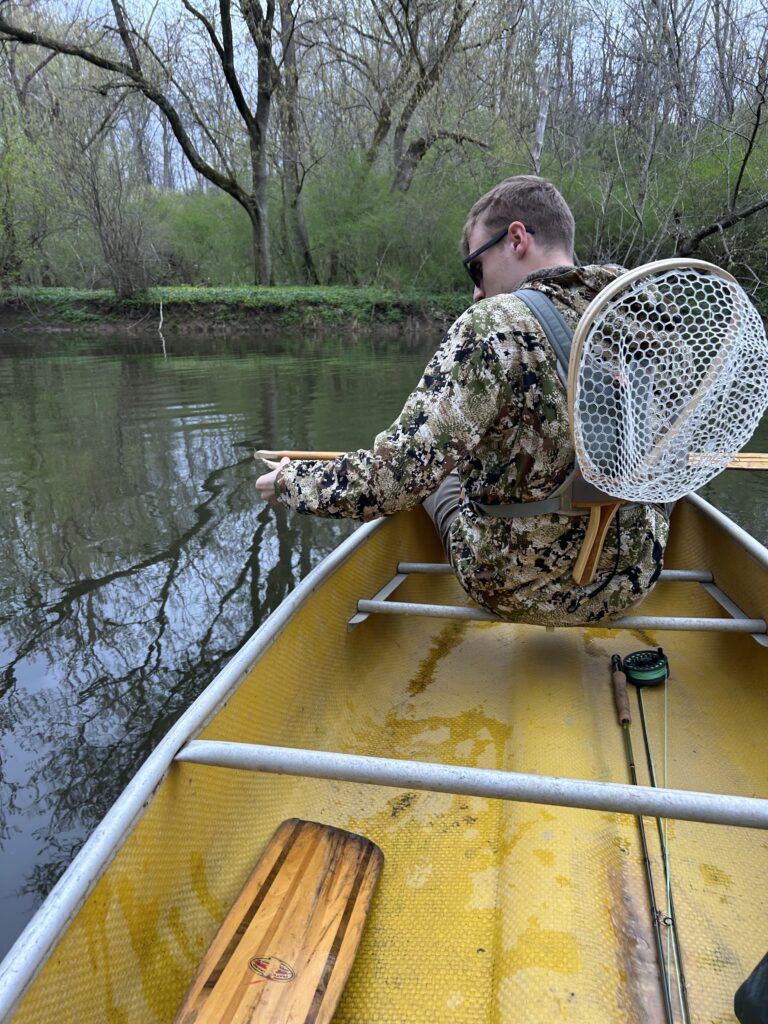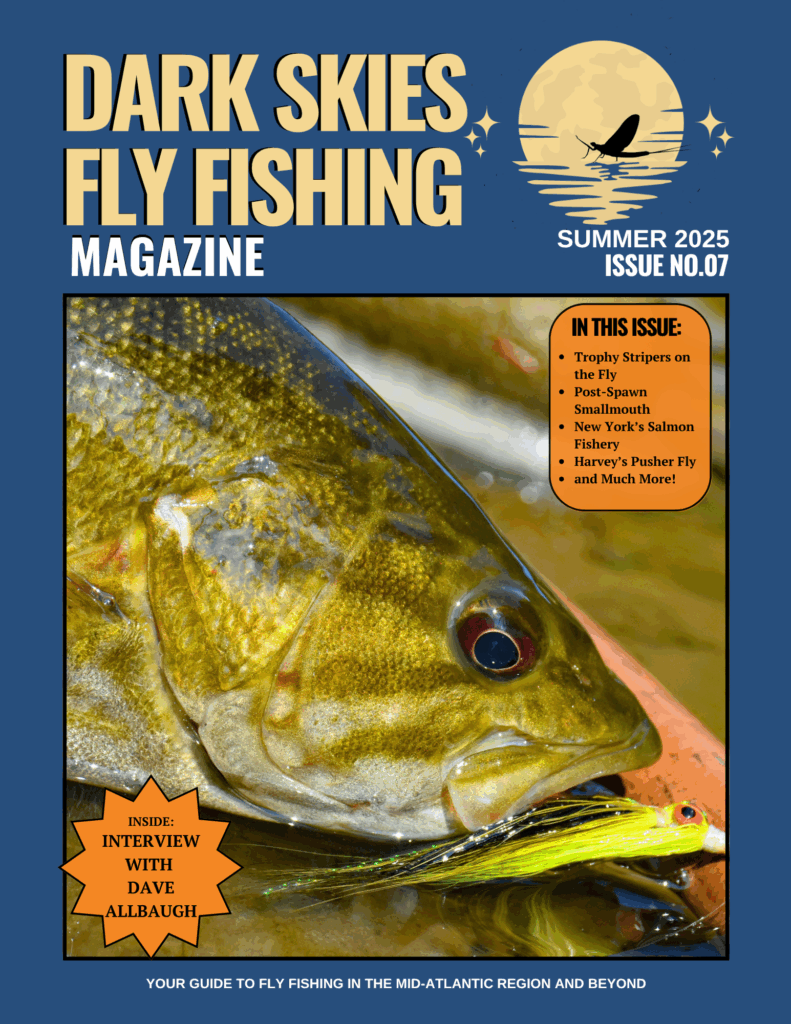Canoe Fishing: The Poor Man’s Drift Boat

You might be thinking that most anglers on the East Coast don’t fish from drift boats, and you’d be right. Despite this, I’ve always thought it would be so cool to have a way to access hard-to-reach honey holes on my favorite creeks and simply get away from the crowds. Then you look at the prices on even the cheapest of drift boats, and your bank account cries out… are you kidding me?! I personally don’t have the money to justify buying even the cheapest drift boat. So what is an angler to do? If you’ve been asking the same questions (or even if you haven’t), I’ve got the perfect solution for you: buy a canoe!
Now, that may sound like an infomercial script, but hear me out. Canoes are great boats for an amazing day on your favorite creek, accessing spots you probably never fished before. They are small, agile, and perfectly suited to navigate tight quarters. Canoes can also carry a lot of gear and a fishing buddy, which often isn’t possible with something like a kayak.
The biggest advantage is that used canoes are readily available for a reasonable price. With a little patience and research, it’s very possible to find a used canoe in the $100-200 range that will meet all of your fishing needs. Some of you might already have an old canoe sitting around or even know someone who doesn’t use theirs, and with a little sweat equity they can be water-ready in no time!
I absolutely love fly fishing from the canoe I recently purchased, and I hope reading this article might inspire you to get out on the water in a canoe, too.
Purchasing a Used Canoe
My foray into the world of canoe fly fishing recently started with a 1978 Sawyer canoe that I’d purchase for $50. I was inspired by watching the guys from the Wild Fly YouTube channel doing their own adventures by canoe. That led me to start looking on Facebook Marketplace and ultimately purchasing a canoe, which may have been the best $50 I’ve ever spent.
This beaten-up yellow canoe has stood the test of time and certainly showed it when I first got it. Dirt was caked on and was now an official part of the paint job. To sum it all up… it was filthy. It also came with two wooden oars, the kind you find down in someone’s basement rotting away. But hey, it all worked — and for the price, it wasn’t bad!
Strapping it onto the roof with a buddy was surprisingly easy, and cruising down the highway with it didn’t give me any problems, except for the hit to my gas mileage. I couldn’t believe it was really that simple to procure a decent fishing vessel!
Testing the canoe in the water for the first time on Yellow Breeches Creek was a bold move, but my buddy Brad and I were ready for the adventure. I would recommend taking it out on a pond or lake first, so you don’t have to deal with the current right away, but we weren’t so wise. We set out and laughed in excitement that we were actually floating! It was perfect. The flat bottom made it super stable and able to float in really shallow water without scraping — both necessities when floating most creeks.
That first trip in my “new” canoe had be beaming with excitement. All of a sudden, so many options for exploration were now available to me. But there was some work to do first.

Prepping for Your First Voyage
When buying a used canoe, the first thing you must do is check for cracks. This is especially important if you’re planning a float trip or adventure on bigger water. Out in the middle of the lake, or down the river far from the vehicle, is a bad place to realize your canoe has serious leakage issues!
While inspecting the used canoe I’d bought, I found plenty of cosmetic scratches, but only a few spots needed patching to give me peace of mind. I fixed those with fiberglass patches and epoxy, which can be found at any hardware store and aren’t too complicated to use; simply follow the directions on the label. Once the material is applied and hardened an appropriate amount of time, it can be sanded smooth and even painted to match the color of the canoe.
For our first run down Yellow Breeches, I didn’t do much more than make sure there were no leaks. Once I knew this was a vessel I was going to keep and hopefully use frequently, I got to work on the cosmetics, cleaning it with a pressure washer and scrubbing with soap and water. With a good bit of elbow grease, she looked good as new…well, maybe not new, but a whole lot better than when I’d bought it!
It really doesn’t take much to make a canoe ready for the water, and once fixed up, they’re relatively low maintenance. Keep in mind, though, before setting sail on anywhere, to check your state’s regulations to make sure you have the correct launch permits or boat registry, if required, particularly if you intend to use state-owned access or waterways.
The First Outing
With the restoration and prep work out of the way, we can now talk about fishing out of the canoe! The day to use the canoe as a “drift boat” came a little over a week after fixing it up. My buddy Josh and I set out with our rods and gear, ready to do some fishing. We had a relatively short two-mile float planned that would take us down a section of the Yellow Breeches. We hoped to access spots that most anglers couldn’t reach and that would be filled with unpressured trout.
In between spots where we saw rising fish or areas that just looked too good to pass up, we fished while floating in the canoe. For the most part, this worked well, but it isn’t easy for inexperienced paddlers. We often struggled to match the drift of the fly and keep ourselves oriented straight down the creek. With more practice and experience, this gets a lot easier and is an effective way to cover larger amounts of water. That day, though, we preferred getting out at the many bountiful-looking spots we encountered along the way.
One spot toward the end of our drift looked amazing. We could see it was loaded with large browns hitting Hendricksons on the surface. We excitedly pulled over to the bank and hopped out into the knee-deep water. We both tied on Hendrickson imitations and were immediately into fish. I hooked one of the biggest fish I’ve ever caught on the Yellow Breeches — a solid 18-inch gorgeous wild brown. At the same time, Josh set the hook on a fish of similar size and netted another beautiful brown after a significant fight.
It was such an exciting moment to be catching fish at a spot we could only access by canoe. We fished a while longer, and although we had limited success the rest of the afternoon, we were more than satisfied. Those were two incredible trout for that creek, and we had certainly made a lasting memory of our first canoe outing.

Tips for Fly Fishing from Canoes
Fly fishing from a canoe is not an easy task, but with practice, any fly angler can get the hang of it. After even just one outing, I started to understand how best to use the canoe for fly fishing, and with more outings, I’m learning even more.
The tips I’m about to share are general points of advice that might not apply to your home creek or the canoe you buy, so keep that in mind.
First, balancing the weight of the canoe is absolutely key. An unbalanced canoe can damage or capsize your boat and endanger you in the process. Always make sure any heavy load is either centered or properly counterbalanced.
Safety should always be your top priority. Keep your gear in waterproof bags. I purchased large roll-top waterproof bags that ensure my items stay dry, even if water enters the canoe. You’d be surprised how much water comes off your waders and boots when you get back into the canoe after fishing a spot. Protecting your gear from getting soaked is incredibly important.
Make sure you have proper life jackets and floatation devices with you on every float. Canoes are prone to capsizing if not balanced correctly, or if a sudden storm kicks up substantial waves. Always check the weather beforehand so you know what to expect and can be prepared for whatever pops up. Also, canoeing in extreme cold weather, cold water temperatures, and/or high water is not the safest option. Canoes are best used during the warmer months when getting wet is a relief, not a concern.
Now, let’s get to the fun part — actually fly fishing from your canoe!
Casting while moving is an effective way to cover large swaths of water, especially if you’re dialed in on what the fish are eating that day. It also allows you to access sections of water you might not otherwise reach in your waders.
The easiest approach is to have the person in the rear as the paddler and the person in the front as the caster. The person in the front has the most room to make their casts and the best view of the water ahead. The rear paddler can maneuver the boat and hold it in place while back-paddling in slower water.
In terms of casting technique, it’s virtually the same as any other situation, with one major difference: you’re typically casting from a sitting position, which means you’re much closer to the water, so you have to adjust your casting accordingly.
Standing while casting is also an option but requires good balance. Only attempt this on smooth water where the risk of falling in is low. Use caution — it’s a great way to end up wet if you’re not careful!
The hardest job falls on the paddler in the back. Their job is to position the boat for the angler at the front to make good presentations to the fish. This often means maneuvering into tricky spots and matching the drift of the fly. With practice, this becomes much easier.
Another highly effective method is spot hopping. When you see a rising fish or a promising spot, pull over, secure your canoe, and step out to fish. This allows you to take your time prospecting each spot. I often find this to be the most productive approach. However, always respect private property and landowners. Many sections of water go unfished because they’re trapped by private property. Always ensure you have the right to access where you’re fishing.
Fishing from your canoe will take some learning, but like most things in fly fishing, time on the water is the best teacher. It’s well worth the effort — who knows, maybe a trophy trout is just waiting for you and your fly to drift by!

Pros and Cons of Fly Fishing from a Canoe
Let’s wrap up with some simple advantages and disadvantages to keep in mind when considering fly fishing from a canoe.
Advantages:
- You can cover large amounts of water quickly. Not only can you access more water, but also areas that are normally inaccessible.
- Canoes can carry much more gear than one person can on foot, allowing for longer days and even multi-day camping adventures.
- Cost. Drift boats are expensive; canoes are affordable. You can find great deals on sites like Facebook Marketplace.
- Transporting a canoe is easy. Most vehicles can carry one on a roof rack without needing a trailer, which simplifies logistics.
Disadvantages:
- Canoes aren’t purpose-built fly fishing vessels like drift boats. You may encounter inconveniences specific to canoe fishing.
- Casting while in motion takes practice and can be frustrating at first. Getting stuck in trees or poor positioning can happen easily.
- Some waters simply won’t allow canoe travel due to dams, waterfalls, or other obstacles, both manmade and natural.
Despite these disadvantages, I highly recommend canoe fishing if it makes sense for you. It’s a perfect way to access new water and enjoy a unique fly fishing experience.
Final Thoughts
Fly fishing from a canoe is a blast, as well as an efficient way to cover water. There’s a reason western rivers are often fished from drift boats — they’re a great way to cover lots of water and access remote sections. And they’re fun! While we may not have the same infrastructure on the East Coast, that doesn’t mean we can’t enjoy similar advantages.
With a simple, inexpensive canoe, you can get out to almost any spot on your favorite medium-to-large creek. Trust me, diving into the world of canoe fly fishing is a treat. It’s something I’ll continue doing on many other eastern creeks and rivers.
So, get out there and give it a try! The worst thing that can happen is you get a little wet capsizing your canoe — and even that makes for a great story.
Have a fly fishing question you’d like answered? Drop us a line at info@darkskskiesflyfishing.com! If we use your question in a blog post or in the newsletter, we’ll send you a FREE fly box with a dozen of our favorite nymphs and dry flies!


